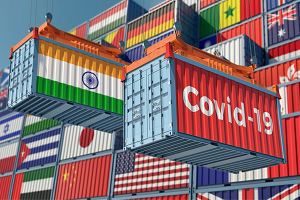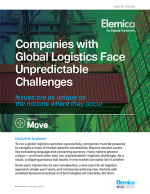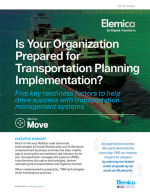Sourcing Optimization 101 + Big Data and Analytics
In these 2 papers, Elemica provides a quick primer on how to handle complex sourcing events, and how to leverage big data and analytics in your next transportation request-for-quote.
Sourcing Optimization 101
Sourcing and procurement teams get the same mandate each year: reduce costs and increase operational value.
Yet, year after year, it is increasingly more difficult to find (or demand) cost reductions from the same suppliers using the same approaches and traditional bid processes.
To address this, progressive purchasing organizations are moving from Total Cost of Ownership to a more evolved concept: Value Creation.
And as part of this value-creating movement, leading procurement organizations are taking a page out of their supply chain organization’s playbook and using optimization to drive systemic costs out of the entire supply chain lifecycle (and not just their suppliers’ margins).
Optimization is a relatively new discipline available to sourcing professionals, and shares goals similar to Network Design (also known as Supply Chain Optimization) – which is to find the most efficient, profitable means of delivering products to customers while still meeting service level commitments.
Yet, balancing competing for business objectives and analyzing modern-day supply decisions are typically too complex, or take far too much time, to solve using spreadsheets or basic online sourcing tools.
So how does optimization apply to Strategic Sourcing?
Simply put, optimization helps you sort through the dozens - if not hundreds – of factors that must be considered in a complex sourcing event. Whereas basic sourcing tools can handle relatively simple sourcing tasks with a modest amount of variables and constraints, advanced optimization tools can take on an immense number of considerations to lead you to the most desirable outcome.
How to Leverage Big Data and Analytics in your next Transportation RFQ
To really get the full potential out of your next transportation RFQ – regardless of the mode you are sourcing – you should be prepared to both ask for, and synthesize, large amounts of data.
No longer is it acceptable to simply line up a number of carriers and ask for rates on a number of lanes, hoping that the mere exercise of conducting an RFQ will compel your incumbents to hold or even lower their rates.
A much smarter approach is to strategically assess where you are today, where you want to be tomorrow, and how you’re going to get there in your next transportation bid. But you’re still not done, as you also need a way to measure results and compliance once these new rates are implemented.
Thus, if you have the proper tools, the know-how, and the patience, you can follow these steps (using Full Truckload as an example) to optimize how you allocate and manage your freight spend:
- Invest the time to calculate accurate baseline levels
- Define your lanes, and how granular you need them to be
- Determine other important questions to ask of your bidders
- Once the bids are in, devise smart scenarios to optimize your freight spend
- Award your lanes with an eye towards risk assessment
- Determine KPIs…then Monitor and Record
- Measure, Track, and Assess
What’s Related




Favorites





